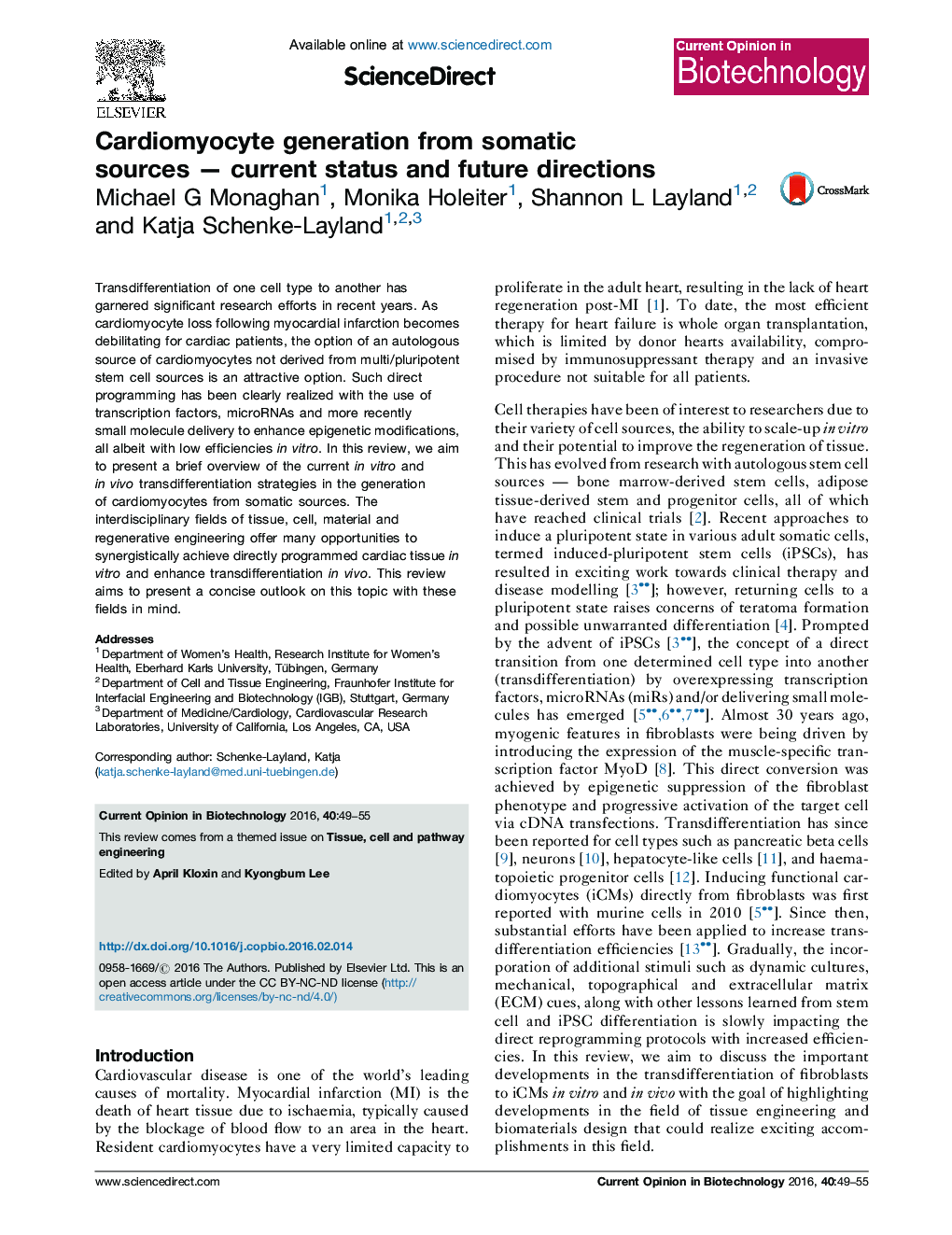| Article ID | Journal | Published Year | Pages | File Type |
|---|---|---|---|---|
| 6487461 | Current Opinion in Biotechnology | 2016 | 7 Pages |
Abstract
Direct reprogramming of fibroblasts to a functional cardiomyocyte with or without a progenitor cell intermediate has been widely reported with increasing efficiencies using transcription factors, miRs and small molecules. The evolution of these protocols will benefit greatly by the use of cardio-stimulatory environments with biomaterials, extracellular matrices and dynamic cultures based on lessons learned in vivo, which could yield significant efficiencies suitable for implantation. Additionally, using delivery vehicles of transdifferentiation factors that are based on biomaterial and extracellular matrices, which are favourable towards cardiomyogenesis could further improve direct reprogramming in vivo.
Related Topics
Physical Sciences and Engineering
Chemical Engineering
Bioengineering
Authors
Michael G Monaghan, Monika Holeiter, Shannon L Layland, Katja Schenke-Layland,
